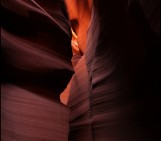Lichens are amazing organisms. They are a composite of algae and fungi, each of which supports the other through the exchange of nutrients (fungi to algae) and carbon (algae to fungi). They are also capable of making a home out of seemingly inhospitable rock surfaces – and what’s more – making the most of these surfaces to release the nutrients they need to grow.

“Pioneer Settler Organisms” by Juan Antonio Campos, distributed by the EGU via imaggeo.egu.eu.
The quartzite above is home to the yellow cracked lichen (aka Acarospora hilaris) and a grey lichen species, better known as Caloplaca carphinea, both of which are busily breaking down the rock. They do this using their physical and chemical armoury:
Physical breakdown
The fungi consist of fine, branching tubes called hyphae. These hyphae penetrate the rock and make their way between both mineral grains and cleavage planes to tease it apart. Over time, expansion and contraction of the lichen body as it goes from wet to dry and back again, slowly wedges parts of the rock apart. Swelling of salts released by the lichen has a similar effect.

A closer look at fungal hyphae. This example is from the fungus penicillium, used to produce the antibiotic penicillin (Credit: GFDL)
Chemical breakdown
In order to obtain much needed minerals from the rock, lichens release a variety of organic acids capable of dissolving the rock’s structure. Their main weapon is oxalic acid, which makes minerals more susceptible to breakdown by water (a process known as hydrolysis). Not all lichens produce this though; instead they rely on simpler compounds (like citric acid) that are secreted by lichen fungi for acid attack.
This colonisation of rocks by lichens, and the weathering of rock surfaces that follows, represents one of the first steps in soil development. Find out what happens next in this Biogeosciences paper.
Reference:
Chen, J., Blume, H. P., & Beyer, L.: Weathering of rocks induced by lichen colonization—a review. Catena, 39, 121-146 (2000)
The EGU’s open access geoscience image repository has a new and improved home at imaggeo.egu.eu! We’ve redesigned the website to give the database a more modern, image-based layout and have implemented a fully responsive page design. This means the new website adapts to the visitor’s screen size and looks good whether you’re using a smartphone, tablet or laptop.
Photos uploaded to Imaggeo are licensed under Creative Commons, meaning they can be used by scientists, the public, and even the press, provided the original author is credited. Further, you can now choose how you would like to licence your work. Users can also connect to Imaggeo through their social media accounts too! Find out more about the relaunch on the EGU website.


